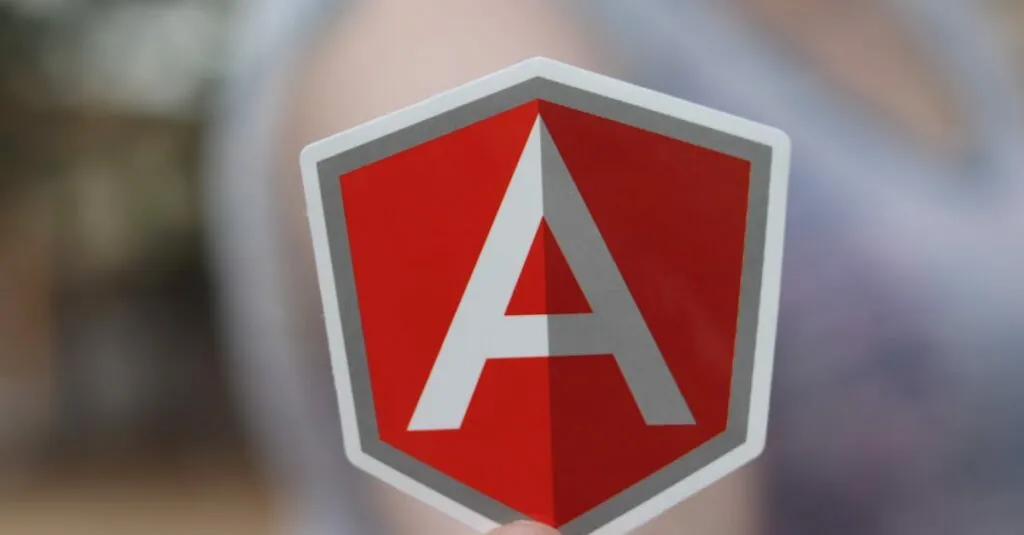In a world where coding can feel like deciphering an ancient language, no-code web app development platforms are the modern-day Rosetta Stone. They empower anyone with a spark of creativity to whip up stunning applications without wrestling with lines of code. Imagine building your dream app while sipping coffee, all without breaking a sweat or calling for a tech-savvy friend!
Table of Contents
ToggleOverview of No-Code Web App Development Platforms
No-code web app development platforms enable users to create applications without requiring programming knowledge. These tools empower non-technical users to design and develop functional web applications efficiently. By leveraging simple drag-and-drop interfaces, users can build complex systems that cater to specific needs.
Many platforms focus on customization, allowing users to personalize their applications. Templates serve as starting points, facilitating quicker development. Robust features often include user authentication, database management, and workflow automation.
Security remains a priority for many no-code platforms. They typically incorporate built-in security measures to protect user data. Compliance with industry standards ensures applications remain secure and trustworthy.
Collaboration takes place seamlessly on these platforms. Teams can work together in real time, making adjustments and updates simultaneously. This fosters innovation, as feedback and ideas can flow freely among team members.
Cost-effectiveness represents another significant advantage of no-code platforms. They typically reduce development costs compared to traditional coding methods. Businesses can allocate resources to other crucial areas while still delivering high-quality applications.
Performance metrics play a vital role in evaluating no-code platforms. Users can track application performance, identifying areas for improvement. This data-driven approach supports informed decision-making in the development process.
Overall, no-code web app development platforms democratize the process of application creation. With minimal barriers to entry, they encourage creativity and innovation across various sectors. As these tools continue to evolve, they significantly impact how software applications are built and maintained.
Benefits of No-Code Platforms
No-code platforms offer various advantages that enhance the web app development experience for users of all skill levels. They stand out in promoting accessibility, efficiency, and affordability in application creation.
Accessibility for Non-Developers
Accessibility remains a defining feature of no-code platforms. Individuals without technical backgrounds can create applications. Interfaces designed with simplicity in mind allow users to drag and drop components. Templates provide a starting point, enabling customization without coding knowledge. As a result, a wider array of creative ideas can manifest into functional apps. Empowering non-developers promotes innovation and encourages collaboration among diverse teams.
Speed of Development
Speed of development represents another key benefit. Building apps on no-code platforms often takes days or weeks instead of months. Immediate feedback from users accelerates the iterative process. This quick turnaround allows businesses to respond to market changes effectively. Real-time collaboration adds a layer of efficiency when teams work together seamlessly. Rapid deployment helps maintain competitive edges in fast-paced environments.
Cost-Effectiveness
Cost-effectiveness serves as a significant advantage with no-code platforms. Development costs see a marked reduction compared to traditional methods. Resources can be allocated to other vital areas, enhancing overall business growth. Teams need fewer developers, minimizing payroll expenses. Additionally, companies avoid costly project delays, ensuring quicker time-to-market. Overall, leveraging no-code platforms delivers financial benefits that support sustainability and continued innovation.
Popular No-Code Platforms
No-code platforms simplify application development for everyone. They cater to various needs, offering unique features that enhance user experience.
Platform A
Platform A stands out due to its user-friendly interface. It offers a robust drag-and-drop builder that streamlines the design process. Users can easily incorporate custom templates and components into their applications. Real-time collaboration features enable teams to work concurrently, increasing productivity. Security measures are part of the deal, ensuring data protection and compliance. Regular updates keep the platform relevant, enhancing functionality based on user feedback. Overall, Platform A serves as an excellent choice for individuals and businesses alike.
Platform B
Platform B excels with its extensive integration capabilities. Users benefit from seamless connections to third-party services, making workflow automation straightforward. It includes various pre-built templates for rapid app development. Performance tracking features allow users to monitor app effectiveness and make informed adjustments. A community-driven support forum provides additional resources. This platform notably appeals to startups and small businesses seeking rapid deployment without coding challenges. Its flexibility accommodates diverse industry needs, making it a go-to option.
Platform C
Platform C focuses on scalability and adaptability. Ideal for growing businesses, it supports complex applications without sacrificing performance. The intuitive interface enhances user engagement, allowing users to navigate easily. Real-time analytics give insights into user behavior, promoting data-driven decisions. Frequent updates ensure new features align with evolving market demands. Users can also tailor apps to specific requirements using advanced customization options. With a strong emphasis on user experience, Platform C fosters innovation and creativity, essential in today’s competitive landscape.
Use Cases for No-Code Development
No-code web app development platforms cater to various sectors, enabling users to create applications tailored to specific needs without technical expertise.
Small Businesses
Small businesses leverage no-code platforms to swiftly develop solutions that enhance operations. Users can design inventory management systems or customer relationship applications with ease. Simplified interfaces enhance customization, tailored significantly to brand identity. Rapid deployment becomes essential, allowing startups to adapt quickly to market demands. User-friendly features enable staff to manage applications without ongoing IT support, further fostering self-sufficiency.
Educational Institutions
Educational institutions utilize no-code platforms to streamline communication and learning processes. Administrators can create portals for student resources or faculty collaboration using straightforward templates. Engaging applications promote interactions among students and teachers, enriching the academic experience. These platforms facilitate data management effectively, helping institutions track student performance and attendance. Cost efficiency plays a vital role, with schools saving on development resources to focus on enhancing educational outcomes.
Non-Profits
Non-profits tap into no-code solutions to develop impactful tools that manage initiatives effectively. Organizations construct donation platforms or outreach applications using user-friendly drag-and-drop features. Collaboration among team members thrives, as diverse skill sets come together seamlessly. Benefits extend to increased visibility, with tailored applications helping raise awareness for missions. Overall, no-code development fosters agility, enabling non-profits to reactively address community needs and drive engagement.
Limitations of No-Code Platforms
No-code platforms offer exciting opportunities, but they also come with specific limitations that users should consider.
Scalability Challenges
Scalability poses a significant challenge for many no-code platforms. When demand surges, these platforms may struggle to handle increased user activity, leading to performance slowdowns. Users often encounter difficulties when attempting to scale applications beyond preset limits. Some platforms may restrict features for larger applications, impacting functionality and user experience. Businesses planning for growth might find it necessary to transition to custom solutions later, resulting in additional costs and resource allocation.
Customization Constraints
Customization constraints can limit creativity on no-code platforms. Although templates and themes provide ease of use, they often restrict individual branding efforts. Users might find it challenging to implement unique features that cater to specific needs. In scenarios where distinct design elements or functionalities are required, the available options may feel inadequate. This limitation can hinder differentiation in competitive markets, making it essential for businesses to weigh the importance of customization against the ease of use offered by no-code solutions.
No-code web app development platforms are transforming the tech landscape by empowering anyone to create applications without coding knowledge. These tools not only streamline the development process but also foster collaboration and innovation among teams. With their user-friendly interfaces and cost-effective solutions, businesses can respond swiftly to market demands while maintaining a focus on creativity.
Though challenges like scalability and customization limitations exist, the benefits often outweigh the drawbacks. As more individuals and organizations embrace no-code platforms, the potential for innovation will continue to grow. This shift is reshaping how applications are built and maintained, making technology more accessible than ever before.










